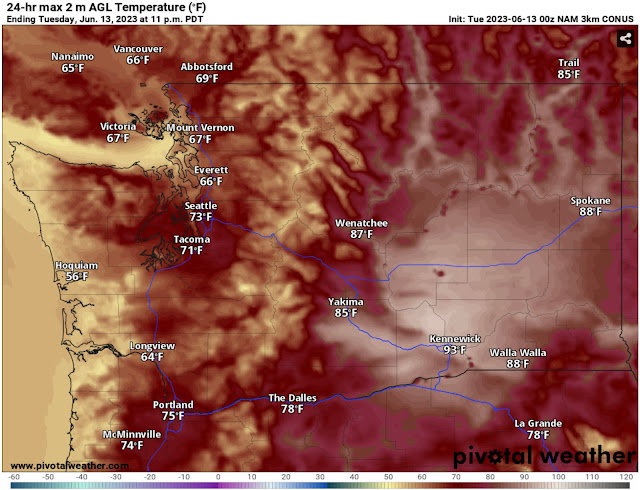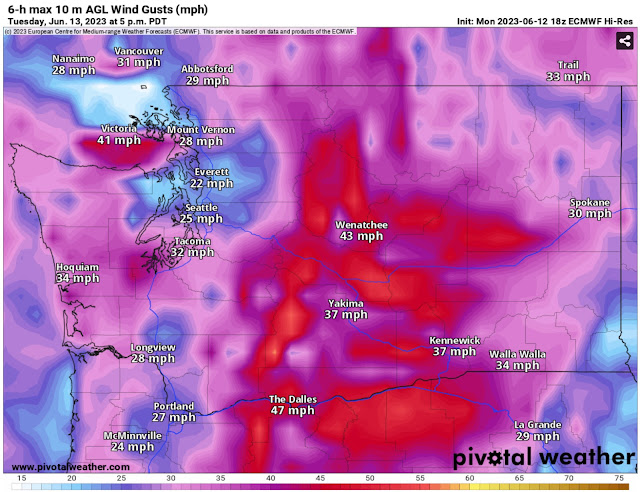FastCast—Wednesday, June 28 to Monday, July 3:
Continued seasonable and pleasant weather is ahead for the Northwest, with mostly sunny and warm conditions. In the lowlands, expect morning marine layer clouds, burning off by late morning, with sunny conditions for the rest of the day. This pattern will prevail on Wednesday, Thursday, and Friday. Expect highs in the upper 70s to low 80s. A high pressure ridge will build starting Saturday, decreasing clouds and bringing mostly sunny conditions. Highs on the weekend will remain in the upper 70s to low 80s, increasing to the low to mid 80s on Monday. Through the entire FastCast period, expect overnight lows in the low to mid 50s. This pattern will set up a hot Independence Day, so stay tuned!
Blog Note: I will be traveling through the end of the week, and the next blog will be posted by Sunday, July 2nd.
———————————————————
Continue reading the full blog below!
A continued warm & mostly dry stretch of weather will continue in the Pacific Northwest. Let’s take a look at the forecast.
First, the NAM high-resolution forecast for highs on Wednesday.
Expect lowland highs on Wednesday in the mid to upper 70s, with some areas south of Seattle reaching the low 80s. The coast will reach the mid 50s to low 60s, and Eastern Washington will reach the low 80s to low 90s.
Next, let’s take a look at the NAM forecast for Thursday.
On Thursday, expect lowland highs in the upper 70s to low 80s, except in the upper 60s to mid 70s north of Everett and near the water. The coast will reach the upper 50s to low 60s, and Eastern Washington will be warming substantially to the upper 80s to upper 90s.
Finally, let’s take a look at the European model forecast for Friday, seen below.
On Friday, expect lowland highs in the mid 70s to low 80s, coastal highs in the upper 50s to mid 60s, and Eastern Washington’s highs in the low 90s to low 100s, hottest in the lower Columbia Basin.
There will be some mountain thunderstorms through late Wednesday, which will bring some precipitation around the state, seen below on the European model.
This forecast shows isolated areas of precipitation in the Cascades, Blue Mountains, and along the coast (due to areas of drizzle).
This pattern of generally sunny, dry, and increasingly warm conditions across the state will continue into July. Let’s take a look at the NWS Climate Prediction Center (CPC) outlooks for July 3-7.
First, the July 3-7 temperature outlook, seen below.
This outlook shows a 40-60% probability of above average temperatures across the state through the first week of July.
Next, the precipitation outlook for July 3-7.
Western and Central Washington has a 33-50% probability of below average precipitation, with Eastern Washington being at an equal probability, except for extreme Eastern WA, where there is a 33-40% probability of above average precipitation.
Enjoy the mostly sunny and pleasant weather as we approach Independence Day!






















































